
Information about various Indigenous artists and art styles in Canada.
- Subject:
- Arts Education
- Indigenous Perspectives
- Visual Arts
- Material Type:
- Primary Source
- Date Added:
- 05/19/2022

Information about various Indigenous artists and art styles in Canada.

The Children’s Health and Well-being Measure (ACHWM) is a tool that gives Indigenous communities and organizations an overview of the health and well-being of children and youth in their communities.
The measure offers insight into children's Spiritual, Emotional, Physical, and Mental wellness.
The survey is completed on a tablet that engages children and acts as a catalyst for honest conversation. The results are shared with each child or youth in a visual form on the Balance Chart.
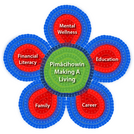
This is a collection of resources to assist with infusing Indigenous knowledge, culture and values into the Financial Literacy Module 1: Why Money Matters (Introductory core)- Explore the purposes of money. Indigenous Elder Interivew Videos: https://opentextbooks.uregina.ca/financialempowerment/back-matter/video-interviews-with-elders/
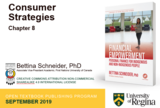
This is a collection of resources to assist with infusing Indigenous knowledge, culture and values into the Financial Literacy Module 2 The Decision-Making Process (core Introductory).Outcome: Apply decision-making strategies to various personal and community financial scenarios.
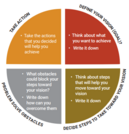
This is a collection of resources to assist with infusing Indigenous knowledge, culture and values into the Financial Literacy Module 2 The Decision-Making Process (core Introductory). Some excellent resources include the NACCA Financial Workbook for Indigenous Women, The Money Stories series and the Native STAND booklet.

Bright, beautiful, interactive and simple to use, Managing your money offers a series of seven worksheets to help Indigenous individuals and families to set and work towards money goals. Each financial topic and activity features artwork by Simon Brascoupé paired with a teaching from the animal world that draws on their skills, strengths and experiences in managing resources. These worksheets are designed to facilitate one-on-one conversations or to be used in financial education workshops (and in fillable pdf format) They can be used in the order they appear, or in a different order that fits best with the individual. This resource also includes recorded webinar, with faciliator guide, blank slides to make your own presenation, and full booklets in English, French, Cree and Ojibwe.
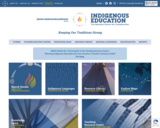
The National Centre for Collaboration in Indigenous Education connects communities with each other to share their stories about Indigenous education across Canada and around the world.
Playlists of short films are available.

This site includes the following: (plus other information pertaining to Aboriginal Education in Manitoba and Canada)
It's Our Time: First Nations Education Tool Kit Teacher's Guide (National and Manitoba)
Creating Racism-Free Schools through Critical/Courageous Conversations on Race
Critical/Courageous Conversations on Race: What your child is learning at school and how you can help
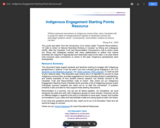
This document helps support students and teachers wishing to engage with Indigenous perspectives in science. It also covers why it is important to connect to local Indigenous communities, provides suggestions on how to develop student understanding, and shares examples of how student science research can directly connect to the
Canadian Truth and Reconciliation Calls to Action.
Also check out the Indigenous Engagement Starting Points Checklist which provides a list of Indigenous groups and/or individuals you/your students can reach out to, to start this connection. A question checklist is also provided to help support those starting discussions.
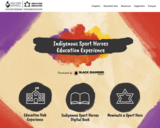
This free, bilingual resource showcases the inspiring stories of Indigenous Hall of Famers in Canada’s Sports Hall of Fame, including icons like Tom Longboat, Alwyn Morris, Colette Bourgonje, and Bryan Trottier. The interactive platform offers rich storytelling, videos, 360-degree views of artifacts, and audio activities. It includes twelve ready-to-use lesson plans that align with Saskatchewan's Grade 5 Physical Education curriculum and support Truth and Reconciliation Calls to Action. Developed in collaboration with Indigenous Hall of Famers and community partners, this resource brings Indigenous Ways of Knowing into the classroom.
Select the Education Hub Experience to find - resources, activities, digital book, engage in a nomination and an educator toolkit.

Discover the history, legal battles, and progress surrounding Indigenous land rights in Canada, highlighting their cultural significance and ongoing struggles for recognition.

This site features over 300 videos of fireside chats with Indigenous leaders across Canada and their careers.
Many videos include reflection and discussion guides.
You can explore by Career, location or community. Click on the fire to get started.

In honour of Truth and Reconciliation Week, the Canadian Olympic School Program is proud to feature the stories of two distinct Indigenous Team Canada athletes, Jesse Cockney and Jillian Weir. Through their personal growth and achievements, they have brought Indigenous voices to the forefront.
Students will explore the themes of gratitude and inclusion, making links between their world, curriculum and stories.
Athlete Stories are available in two different reading levels, Kindergarten – Grade 3 and Grade 4- 6. Each story is accompanied by discussion questions and learning activities that teachers can easily integrate into their curriculum.

Indigenous games for children.

Indigenous people from every region of Canada served in the armed forces during the Second World War, fighting in every major battle and campaign of the conflict. To serve their country, Indigenous people had to overcome unique cultural challenges. Their courage, sacrifices, and accomplishments are a continuing source of pride to their families, communities, and all Canadians.
This site outlines the many outstanding accomplishments of Indigenous people in WWII.

This is a well-organized site that is easy to navigate and is available in both English and French.
There is much information on this site and I would encourage you to explore and read this resource online.
Topics include:
Truth & Reconciliation
First Nations
Inuit
Metis

This site offers a wide range of FNMI resources for grades K-12.
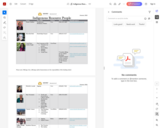
Find speakers to come to your classroom in person or virtually, based on their specialty.
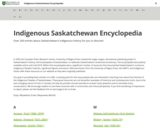
Indigenous Saskatchewan Encyclopedia
Over 200 entries about Saskatchewan's Indigenous history for you to discover

This lesson teaches Cree words through songs. These songs often serve a specific purpose and have great meaning. With the guidance of an Elder, Knowledge Keeper, or singer/songwriter, students will listen to songs and understand the meaning behind the lyrics. Students will consider how cultural identity is reflected in the work.